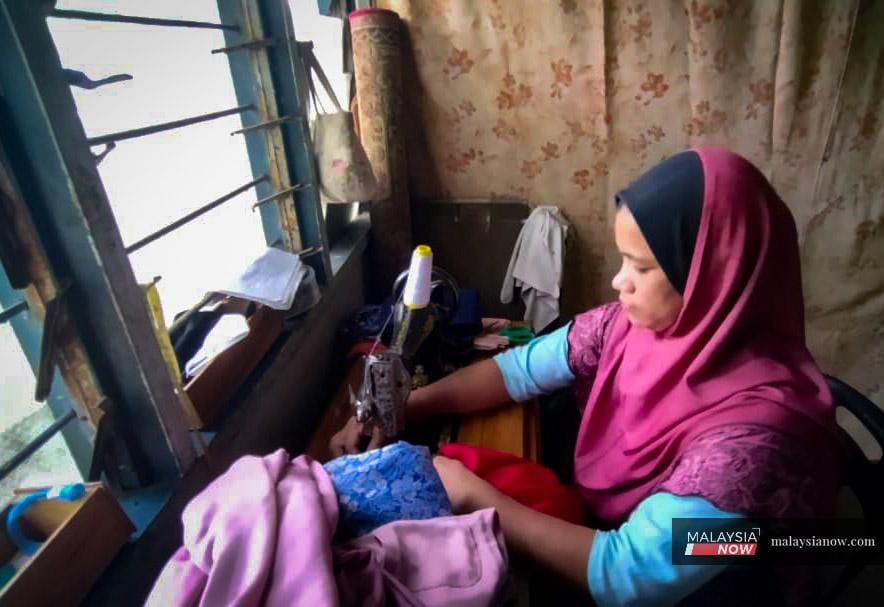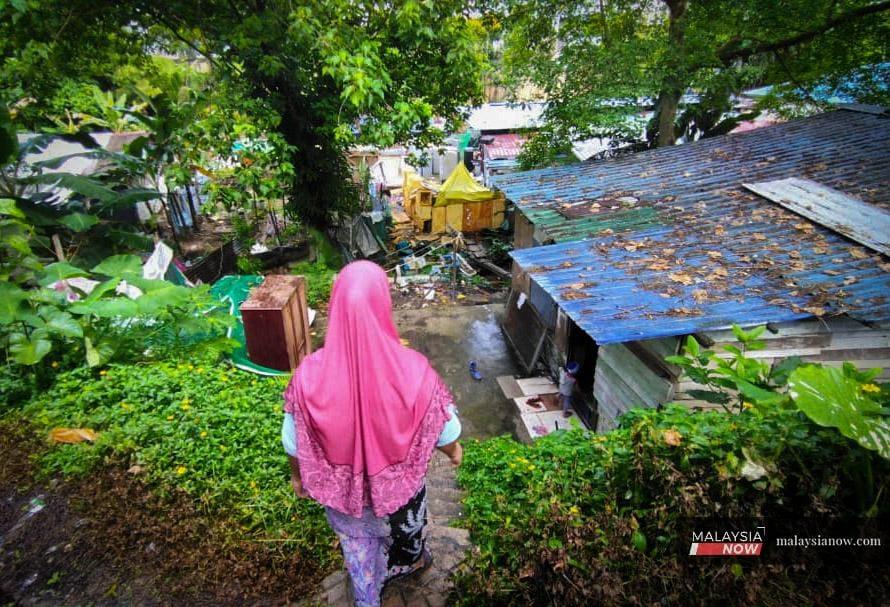No lights or Raya celebration for Rohingya squatter family
There is not even enough money for food.
Just In
In Kampung Indah Permai in Ampang Jaya, Selangor, a winding road connects a series of homes in a hilly area.
A narrow alley branching off from the main road eventually fades into a bumpy dirt path, lined on either side with bushes and scrub.
The path is too narrow to accommodate any vehicle larger than a motorcycle, and even this would be brought to a dead end by the steep steps leading down to a small squatter area.
Hamidah Sayed Rahman lives in the hut nearest the steps. She is one of several Rohingya families who have made their home in the tiny clearing.
Beside her house is a small drain, near which several chickens peck the ground for food.
The zinc roof is covered in a blanket of dead leaves which fall from the trees overhead.

The ramshackle hut is all the home that Hamedah and her five children know. They have lived alone since her husband’s death three years ago.
They used to live in Kuantan, where her husband worked as a welder.
“But after he died, we were left with no source of income,” she told MalaysiaNow.
“We came to the Klang Valley because I was told I could get help here.”
But even a cursory glance at the hut is enough to show that gestures of help have been few and far in between.
The area is filled with garbage, and a stench rises from the drain next to the house.

Hamedah rents the house for RM400 a month. Inside, the floor is bare cement. Her eldest child uses one of the small rooms while another is set aside as a prayer room. She and the rest of her children sleep in the living room.
In the living room, there is a table and a few rickety chairs. A sewing machine sits at the end, in a corner facing the window.
There are no Hari Raya decorations to be seen anywhere in the house.
“Before my husband died, he took care of all of our needs,” Hamedah said.
“For Raya, he would go to the market to buy clothes and whatever else we needed.”
Since his death, though, the Raya spirit has been low.

Hamedah does what she can to make the occasion special for her children, sewing them clothes with cloth donated by well-wishers.
But there is no money for food, let alone a celebration of any kind.
These days, the only money Hamedah has is from cleaning houses for about RM30 to RM40 per house. She uses the money to pay the rent and to put food on the table for her children.
Her younger children attend the Darul Eslah Rohingya Academy, a school for Rohingya refugees. The teachers there pick them up for class and drop them off at home once school is out for the day.
It has been a long time since food was last cooked in her kitchen. For the most part, they subsist on chapati which is cheap and within the family’s tiny budget.
Living in the shadow of the larger, more affluent houses which tower overhead, they do not think beyond living through the present day. Hari Raya is nothing but a distant dream.
“There will be no lemang, rendang or lights to celebrate here,” Hamedah said simply.
Subscribe to our newsletter
To be updated with all the latest news and analyses daily.
